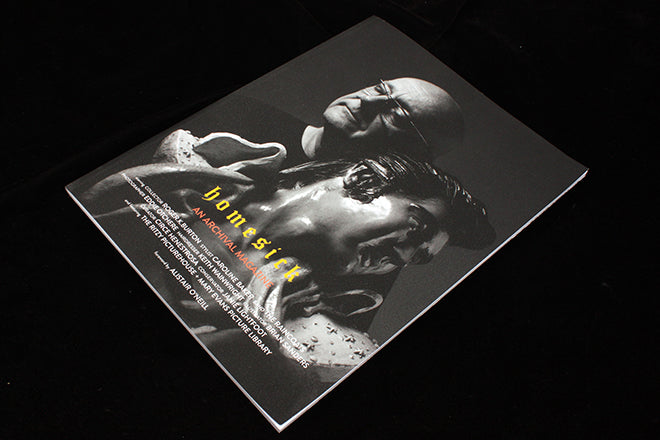
Homesick #3
Having started life as a free magazine, issue three of Homesick is the eagerly-anticipated first paid-for edition, launched last night with a party in London.
Set up initially as a response to a perceived sameness she was seeing across fashion and art magazines, Homesick founder and archivist Reagan Clare decided that asking artists and archivists for material you can’t find on the internet would be a good starting point for a magazine. She wasn’t wrong.
A foreword from fashion curator Alistair O’Neill ties together the issue’s focus on charting ‘the diverse experiences a city like London can offer’. It’s odd in a magazine that the space usually given over to an editorial letter is foregone in favour of a ‘foreword’ by a prominent figure like O’Neill, who doesn’t feature elsewhere in the issue. It’s a curiously bookish thing to do – almost an endorsement as much as a summary. It’s perhaps a result of Clare positioning herself as ‘Creative director’ and treating the magazine more as a curatorial project than giving herself the title ‘Editor-in-chief’ as most people would do.
The magazine does indeed feel more like a series of avenues of research put together, rather than leaning towards a cover story or lead interview, as a traditional magazine might. Everyone is given equal weight, which is heartening considering that the focus is on telling the stories from behind the scenes, that no-one hogs the limelight.
Clare still conducts many of the interviews and it’s interesting to see what interests her: digging down into the specificities of analogue film, and the particular dynamic of photography in the pre-digital age is one theme that emerges. It’s not all photography though, an interview with Elephant and Castle-born illustrator Brian Sanders (above) offers a glimpse of 70s ‘the golden age of illustration’.
The jump from free to paid has seen the magazine design overhauled – the format is larger, the paper is thicker. I can’t help but miss the starkness of the original front cover and tightness of the design throughout. Here, although it’s great to give the images more space, something is lost about the sense of immediacy that the first iteration had, when text was constrained to a box and the whole thing felt a bit more punk.
That said, walking down memory lane with the lesser-heard people in pop culture is a welcome reminder that pop wasn’t always instagram influencer niceties, but gritty and radical.
An interview with ‘The First Stylist’ Caroline Baker is an insight into being on photoshoots in the 70s and 80s, with accompanying gossip on the eccentricities of the photographers of that time (above).
Contact sheets from photographer Eddie Otchere from the mid-90s are very era-specific. Headshots of Fat Boy Slim (above) and RZA (Wu Tang Clan) are a masterclass in what different types of 35mm can do. Aalyiah is, even at age 16, iconic. Furthering the sometimes accidental nature of analogue, Otchere’s mum features at the end of Aaliyah’s roll (below), as a way to use up the film.
It’s in these accidental moments that the archival slant really comes into its own. It’s here as well that the larger format of the magazine lends itself to fully enjoying a whole contact sheet of portraits.
An interview with another archivist, Roger K. Burton, focuses on Americana, particularly Disney with a dose of Elvis (a pose with a bust of the late singer makes it onto the front cover, top). He makes a point about there being no white gloves being involved to interact with his collection – it’s there to be enjoyed – which seems an important sentiment to have in an archival magazine – it would be all too easy to focus on fragile and precious things kept under lock and key.
Homesick is quietly radical, placing importance on the value of images and stories that might not otherwise be seen or told, but is never too precious about them, and doesn’t fall into the trap of romanticising the past or wishing things could be like they once were.







